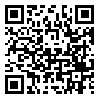Volume 15, Issue 1 (4-2024)
Res Anim Prod 2024, 15(1): 13-24 |
Back to browse issues page
Download citation:
BibTeX | RIS | EndNote | Medlars | ProCite | Reference Manager | RefWorks
Send citation to:



BibTeX | RIS | EndNote | Medlars | ProCite | Reference Manager | RefWorks
Send citation to:
Toghdory A, Ghoorchi T, Asadi M, Amozadeh Araee K, Aalipour M. (2024). The Effect of Replacing Soybean Meal with Corn Germ Meal in the Diet on Performance, Digestibility, Rumination Behavior and Blood Parameters of Fattening Lambs. Res Anim Prod. 15(1), 13-24. doi:10.61186/rap.15.43.12
URL: http://rap.sanru.ac.ir/article-1-1389-en.html
URL: http://rap.sanru.ac.ir/article-1-1389-en.html
1- Gorgan University of Agricultural Sciences and Natural Resources, Gorgan, Iran
Abstract: (2617 Views)
Extended Abstract
Background: Approximately 80 to 85 percent of the costs associated with raising fattening lambs are related to feed expenses. Therefore, conducting research to determine the functionally and economically optimal ration for fattening lambs is essential for improving the country's animal husbandry. With advancements in technology and new methods for converting and processing food, many sources of animal feed have become competitive with human food sources, including corn, wheat, and barley. To address this issue, the optimal use of agricultural wastes and by-products as feed for ruminants is crucial for enhancing livestock production. One such agricultural by-product is corn germ meal (CGM), which is produced during the extraction of corn germ through dry or wet milling processes for corn oil intended for human consumption. This research aimed to investigate the effect of replacing soybean meal (SBM) with corn germ meal in the diet on the performance, digestibility, chewing behavior, and blood parameters of fattening lambs.Methods: In this study, 30 breeding lambs (average weight of 32.1 ± 2.7 kg) were randomly divided into three groups, each with 10 repetitions. The control group received a diet without corn germ meal, while the other groups had 50% and 100% of soybean meal replaced with corn germ meal for 84 days. At the start of the study, to ensure the complete health of the lambs and their freedom from parasites, parasite control measures (disinfecting the environment and administering albendazole tablets) were implemented, and an enterotoxemia vaccine was injected subcutaneously. The animals were then randomly assigned to the experimental treatments and placed in individual cages. Throughout the study, the animals had free access to rock salt and clean drinking water. Lambs were weighed every 14 days, and daily food intake was recorded. The diet was adjusted according to the recommended requirements outlined in the National Sheep Research Association tables, ensuring that all experimental treatments had similar protein and energy content. To calculate weight changes, the animals were weighed weekly after a 16-hour fasting period using a digital scale. The daily feed was mixed thoroughly for the animals, and the remaining feed for each animal was weighed and recorded daily. Feed consumption was calculated based on the difference, and the remaining feed in each manger was noted. For digestibility samples, feed, waste, and feces were collected from each animal over five days (days 77 to 82). Blood samples were taken from the jugular vein of the lambs using heparinized tubes and syringes on the 60th day to measure blood metabolites. Chemical kits from Pars Azmoun Company and an autoanalyzer were utilized to assess blood glucose, urea, and triglyceride levels. Chewing activity was measured over 48 hours on days 82 and 83 of the testing period, with the time spent on eating, resting, and ruminating recorded visually every 5 minutes. The results were analyzed using the SAS statistical program.
Results: The results indicated that replacing soybean meal with corn germ meal in the diets of fattening lambs did not significantly affect body weight gain on days 28, 56, and 84. Additionally, total body weight and daily weight gain throughout the experimental period were unaffected by the dietary replacement. Weekly feed consumption, daily dry matter intake, and feed conversion ratios also showed no significant changes due to corn germ meal inclusion. The apparent digestibility of nutrients in the experimental diets revealed that the digestibility of dry matter, organic matter, crude protein, insoluble fibers in neutral detergent, insoluble fibers in acid detergent, and ether extract were not influenced by feeding corn germ meal. Furthermore, chewing behavior analysis showed no significant differences among treatments regarding eating, rumination, chewing, resting, and standing times. However, some blood serum parameters indicated that the concentrations of triglycerides (P = 0.031) and urea (P = 0.014) in lambs fed with corn germ meal were significantly higher compared to the control group. Nonetheless, replacing soybean meal with corn germ meal did not affect blood glucose concentrations.
Conclusion: The findings from this research suggest that corn germ meal can be included in the diets of fattening lambs without compromising performance, feed consumption, nutrient digestibility, chewing behavior, or blood serum parameters. This by-product can effectively replace soybean meal in lamb diets.
Send email to the article author
| Rights and permissions | |
 |
This work is licensed under a Creative Commons Attribution-NonCommercial 4.0 International License. |




